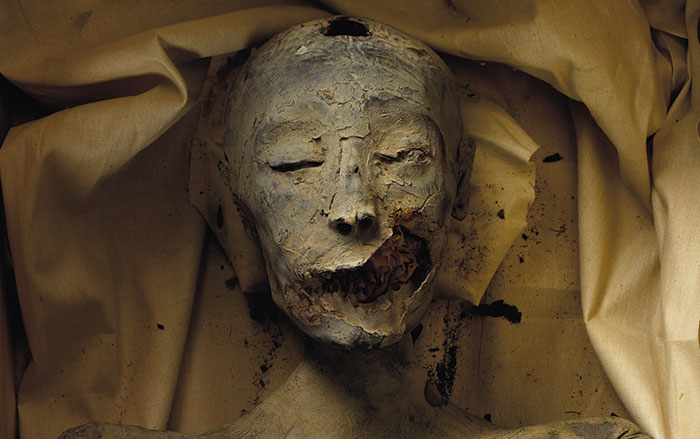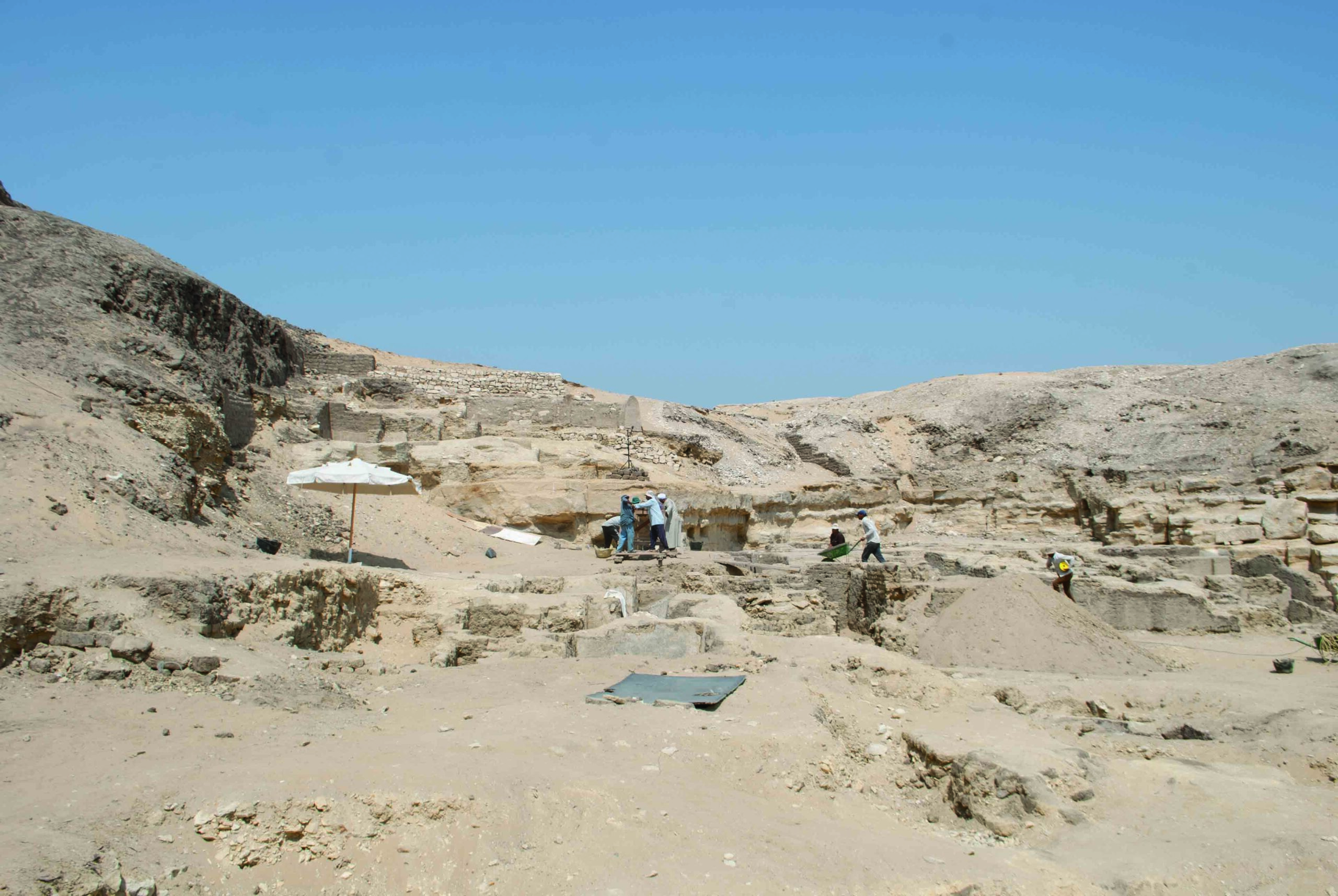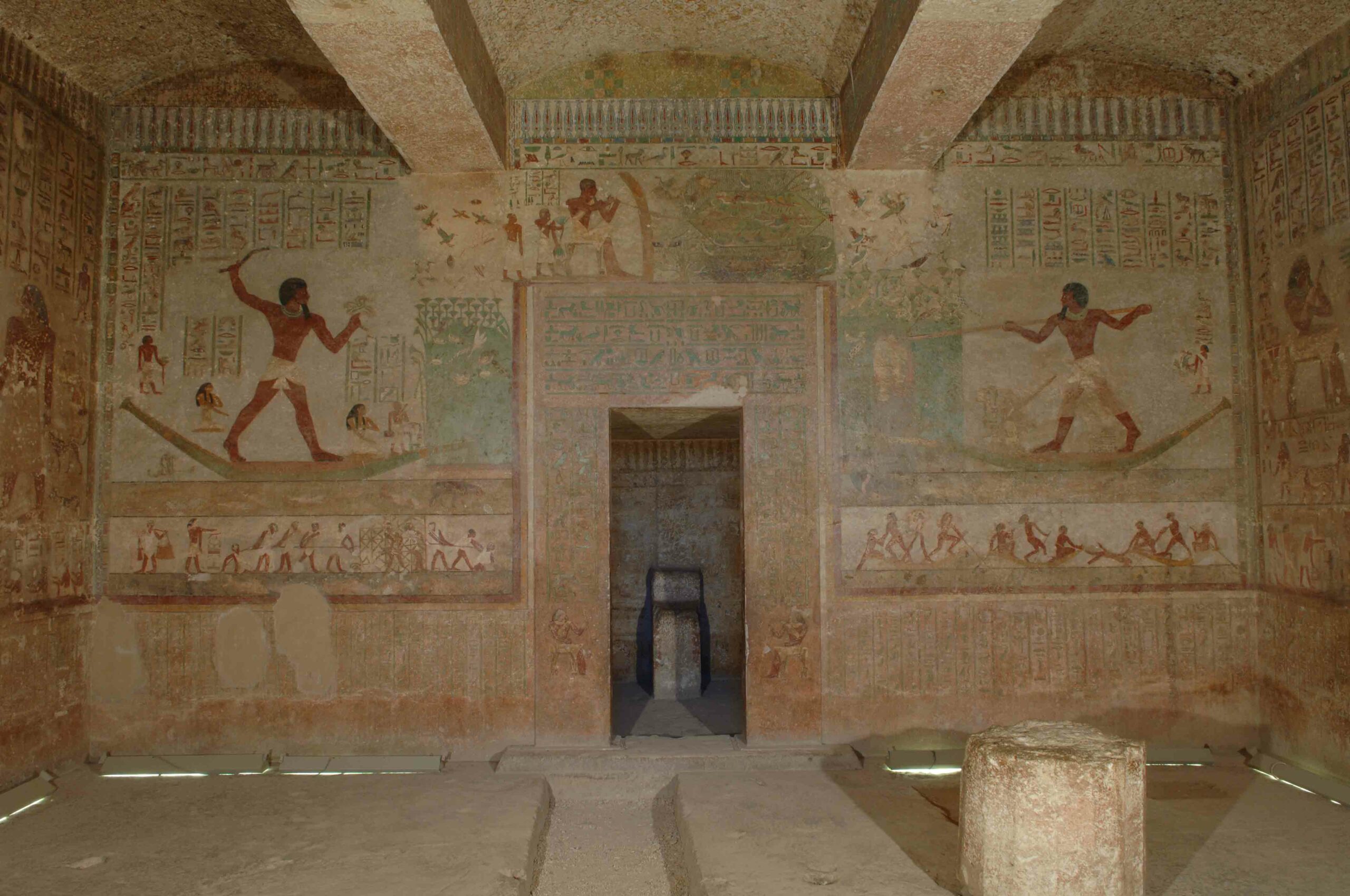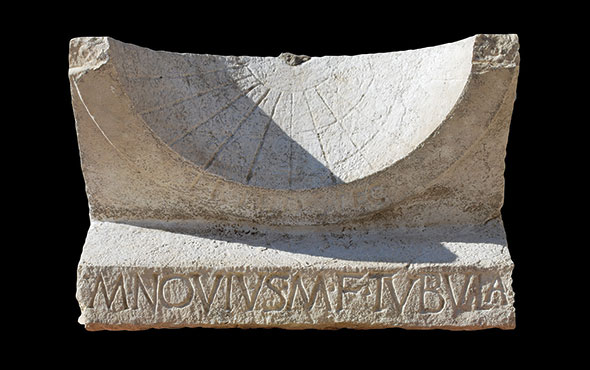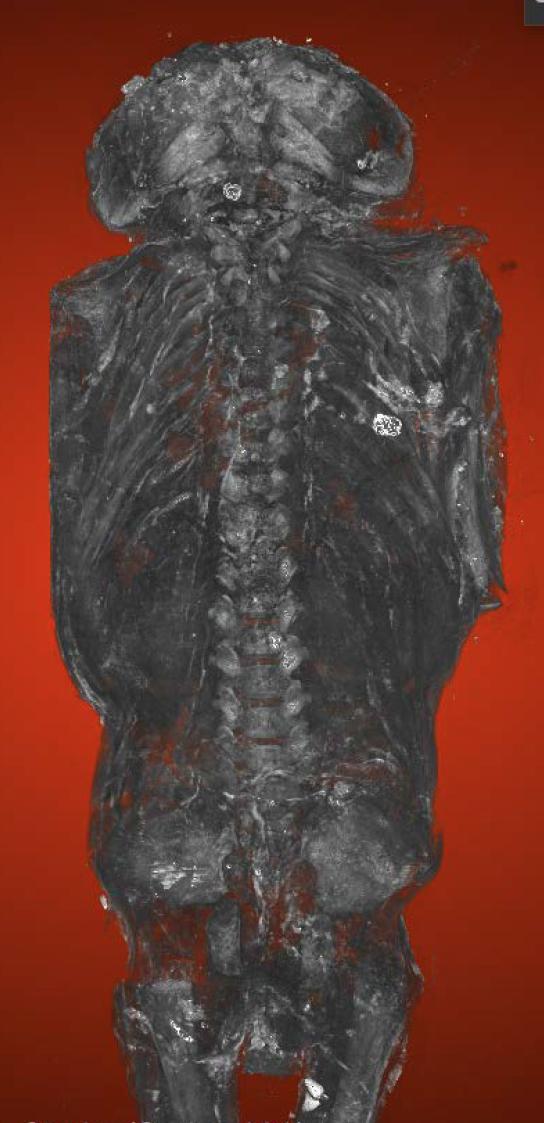
LONDON, ONTARIO—Live Science reports that high-resolution CT scans of what had been thought to be the 2,100-year-old mummified remains of a hawk are actually the remains of a stillborn human fetus. The fetus, estimated to have been born at a gestational age between 23 and 28 weeks, suffered from anencephaly, a condition in which the brain and skull fail to develop normally. Bioarchaeologist Andrew Nelson of the University of Western Ontario said the identification of the mummy as a hawk votive had been based upon the decoration of the mummy’s cartonnage, which includes depictions of Osiris, the Egyptian god of the underworld, and the goddesses Isis and Nephthys. A bird with a human head is shown flying over Osiris, who is lying on a coffin frame. An Udjat eye, a symbol of protection and good health, is shown at the top of the image. The mummy has been in collections of England’s Maidstone Museum since 1925. Its origins are otherwise unknown. To read in-depth about tomb paintings in Egypt, go to “Emblems for the Afterlife.”




